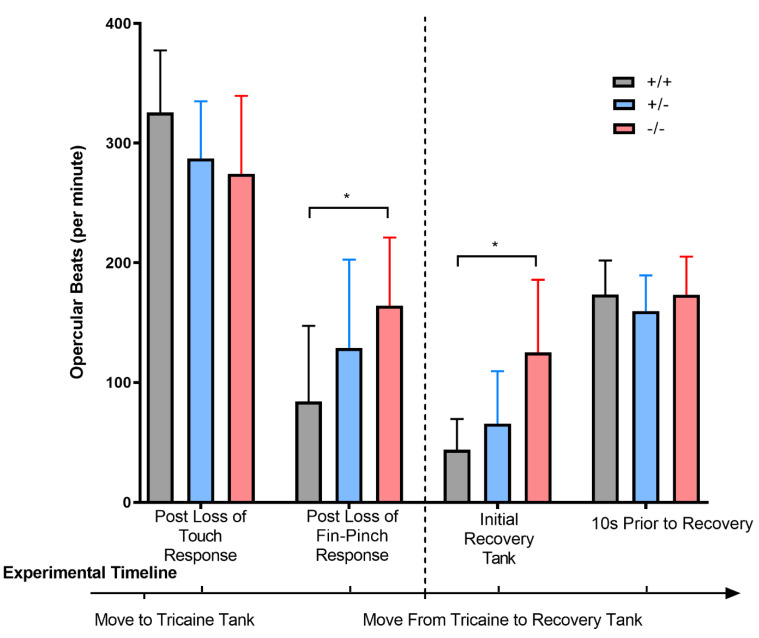Figure 4
chd7−/− fish have higher respiratory rates under anesthesia than their chd7+/+ counterparts. Adult fish were anesthetized, and respiratory rates (opercular movements) were recorded at the time fish lost their response to touch (time point 1− post loss of touch response) and response to fin−pinch (time point 2− post loss of fin pinch response). Fish were then moved to a recovery tank, and respiratory rates were assessed both upon entering the recovery tank (time point 3− initial recovery tank) and just before the fish recovered the ability to swim (time point 4–10 s prior to recovery). * p < 0.05, as per one-way ANOVA, with a Tukey post-test. Error bars represent standard deviation (SD). n = 7 for chd7−/− and n = 13 for the other two groups.

